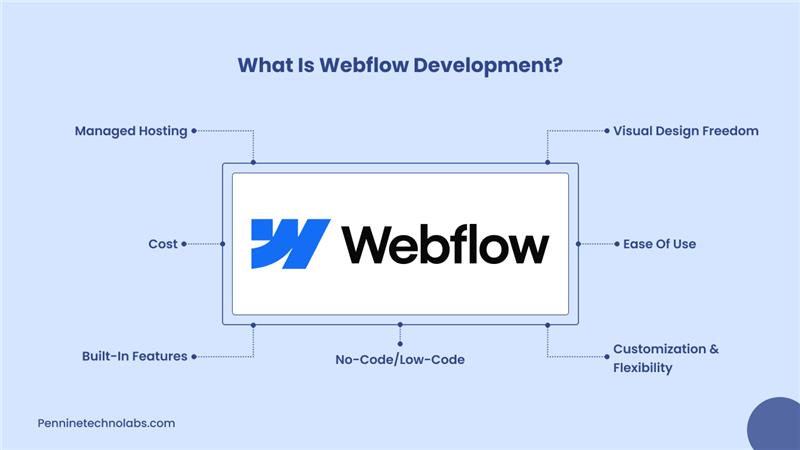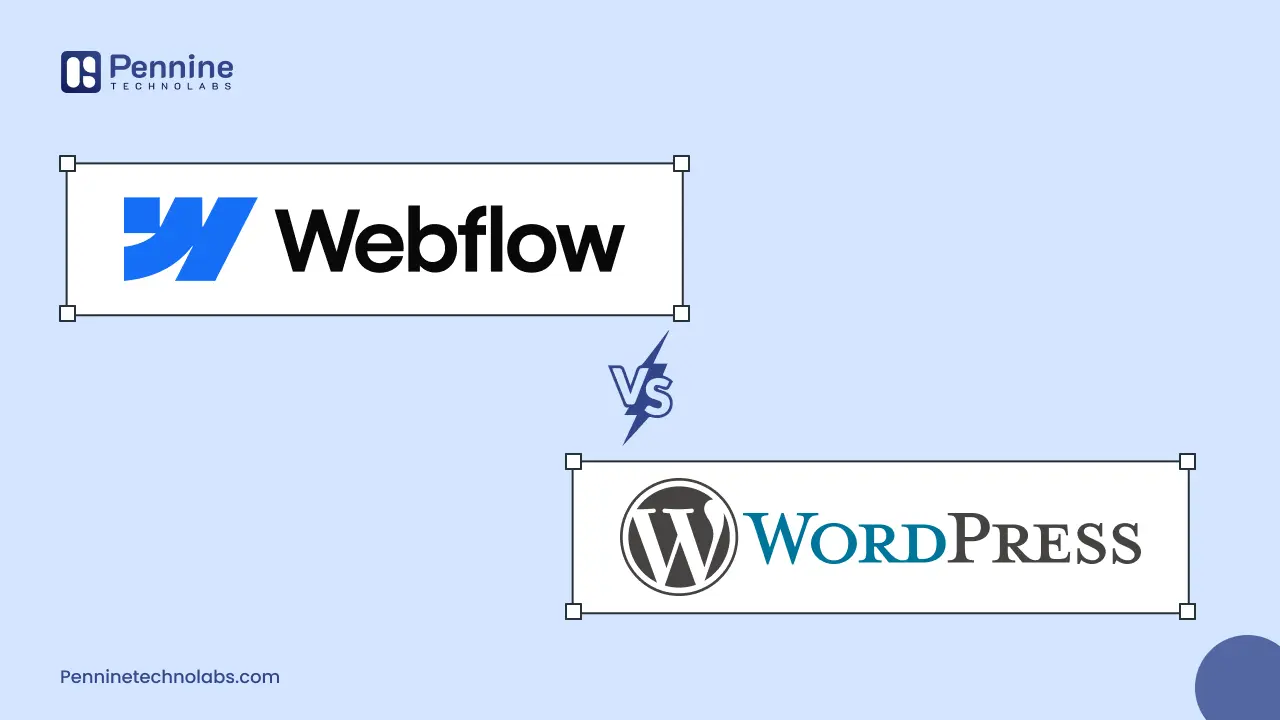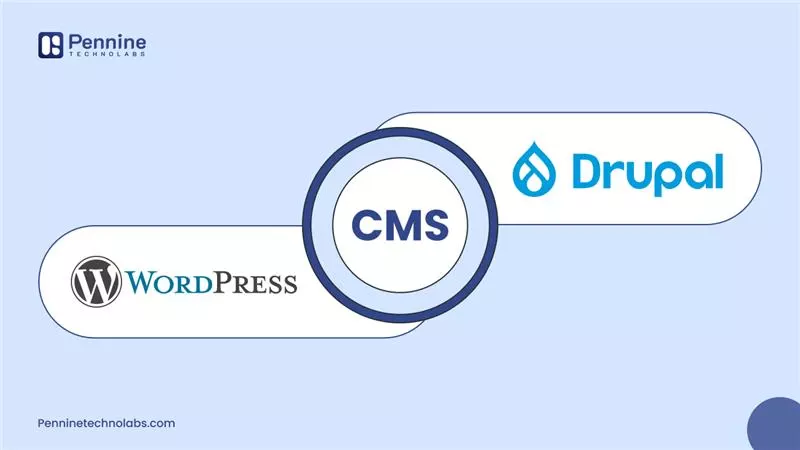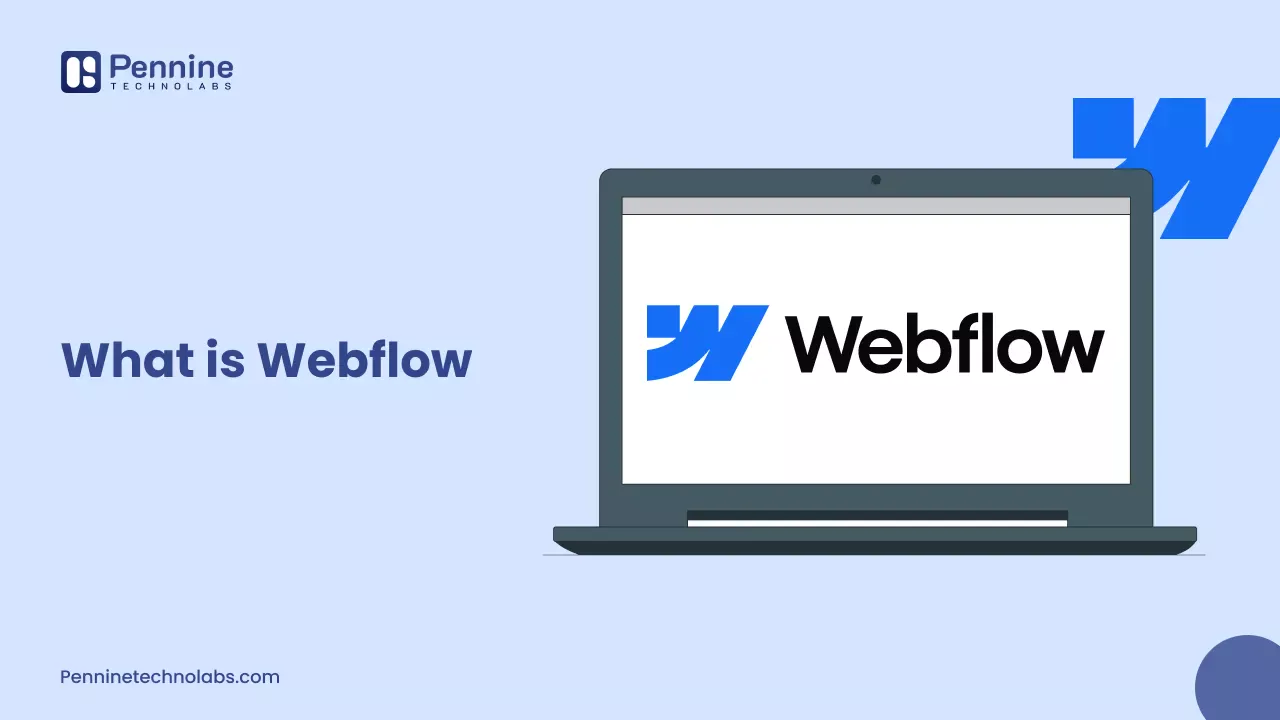Quick Summary: WordPress and Webflow are two of the most popular website builders. With this comparison, you get the choice of the two with their features and limitations. Both platforms excel in their website-building process and are tailored to your specific needs, technical comfort, and long-term objectives.
Choosing the right platform for your website is no longer a simple decision. Businesses today have a wide range of options, each of which has unique strengths, pricing models, and target users. Options include WordPress and Webflow.
WordPress has been a go-to platform for more than a decade, which strengthens everything from individual blogs to complex enterprise websites. It is flexible, adaptable, and supported by the large-scale ecosystem of plugins and developers.
Webflow is a modern solution designed for today’s design and development environment. It adds hosting on a visual design tool, CMS, and platform. Its appeal lies in its ability to create a custom website with minimal coding, especially popular among designers and agencies.
Webflow vs WordPress: Which is a Better Platform?
Both Webflow and WordPress have grown into important places in the world of web development, but they serve different needs and audiences. After analyzing global market data, user feedback, and real-world performance, this broader comparison will help you decide which platforms align with your business goals.

What is WordPress?
WordPress websites are among the best content management systems, making up a strong 43.4% of all websites on the Internet. This open-source platform has come a long way since it was first used for blogging. WordPress development now has millions of users around the world and is a great way to develop websites.
Plugin Ecosystem
There are more than 60,000 plugins for WordPress websites that you may find in the official dashboard. Yoast SEO, WooCommerce, and Elementor are all popular plugins with millions of active users. This shows that the platform has a lot of support from third-party plugins.
Website Building
There are several ways to design a WordPress website. Gutenberg editors that use themes and blocks are traditional, whereas newer page builders like Elementor and Breakdance let you drag and drop elements. This versatility makes it possible for both new and experienced developers to create a website.
Customization
WordPress platforms excel in optimization capabilities. Website users can modify WordPress theme design, install plugins, customize CSS, and even edit PHP files. The customization suits WordPress for everything from simple blogs to complex enterprise websites.
CMS
WordPress CMS is designed for scalability and efficiency. It handles unlimited posts, pages, and categories, making it an option for content-based websites such as blogs, news portals, and large corporate sites. Custom post types for platforms, advanced user roles, and clean material support for organization systems.
Cost
WordPress is free to download and use itself, but operating costs include hosting ($3–12/month), domain registration ($10–20/year), and alternative premium themes or plugins. Total costs can range from $100 to $3,000+ annually, depending on your requirements and hosting choice.
Open Source
As an open-source platform, a WordPress development agency provides complete transparency and freedom. Users have full access to the source code, can modify it as required, and can benefit from constant community-operated reforms. This open nature ensures a seller lock-in and promotes innovation.
Popularity
The dominance of WordPress is undisputed. The forum has maintained a stable growth. In 2012, its market share increased from 54.3% to 62.7% among websites with a known CMS. Major brands such as Techcrunch, Bloomberg Professional, and Sony Music use WordPress, demonstrating their enterprise-level capabilities.

What is Webflow?
Webflow is the next generation of web development platforms, providing a visual, no-code way to create quality websites. Webflow Development became popular among designers and businesses who wanted to be able to design without having to deal with standard coding problems.
Visual Design Freedom
Webflow has a visual design interface that lets users control any part of the site with pixel-perfect accuracy. Webflow makes clean HTML, CSS, and JavaScript code, which gives you more creative freedom than professional growth tools. This is different from other website builders.
Ease of Use
The platform has an intuitive drag-and-drop interface that appeals to both early and website design professionals. While there is a learning curve for people unfamiliar with design principles, the visual nature of editing makes it more accessible than traditional coding.
Customization and Flexibility
Webflow provides extensive options within your platform ecosystem. Users can create custom animations, interactions, and responsive designs without writing code. However, the customization is limited.
No-code/low-code
As a major no-code platform, Webflow democratizes web development by enabling users to create a clean website without programming knowledge. The platform bridges the gap between simple drag-and-drop builders and complex content management systems.
Built-in Features
Webflow comes packed with core features that WordPress would normally rely on third-party plugins to provide, things as SEO management, form handling, built-in SSL, and performance tuning.
Managed Hosting
Webflow also includes hosting managed as part of its services. Your website is combined with AWS Infrastructure with content delivery networks worldwide. Therefore, you get fast load time and reliable availability without installing a separate hosting service.
Cost
Webflow is operated on a subscription model, with site plans starting at $14/month and $23/month for basic sites. E-commerce plans begin at $42/month. The total cost can be $150 to $3,000+ annually, depending on features and traffic requirements.
Difference Between Webflow and WordPress
| Feature | WordPress | Webflow |
|---|---|---|
| Ease of Use | Easy for beginners with page builders, but requires setup and maintenance | Visual builder is intuitive after initial learning curve |
| CMS | Highly flexible, supports complex content and workflows | Built-in CMS integrated with design |
| E-commerce | WooCommerce offers full scalability and extensions | Built-in Ecommerce, best for small to medium stores |
| Customization | Unlimited with themes, plugins, and code | High visual customization, limited plugin integrations |
| Hosting | Requires separate hosting provider | Hosting included with AWS infrastructure |
| Cost | Free core software, extra for hosting and premium plugins | Monthly or annual subscription including hosting |
| Open Source | Yes | No |
| Popularity | Very high | Growing rapidly |
Which is Better for Your Business: Webflow vs WordPress
The answer depends entirely on your specific requirements, technical comfort level, and long-term goals. Webflow and WordPress are the most preferred web development platforms in the world. But it depends on your requirement to choose a suitable framework for your business project.
When to choose WordPress:
- Require unlimited scalability and optimization.
- Plan to publish content regularly.
- If you want complete control over the functionality of your website.
- Has access to technical skills or developers
- Advanced e-commerce capabilities require
- Priority to low starting cost with flexibility
When to choose Webflow:
- Priority visual design and aesthetics
- Want an all-in-one solution with managed hosting.
- Design skills, but limited coding knowledge
- Need to launch quickly with professional results.
- Prefer estimated monthly cost.
- Comprehensive content does not require publication or complex functionality.
Get Started with WordPress Website Development
Getting started with WordPress requires a few steps:
- Choose a host: Select from shared, VPS, or managed WordPress hosting based on what you need and how much money you have.
- Install WordPress: Most hosts let you do it with one click.
- Choose a Theme: Pick from thousands of free and paid choices.
- Add important plugins, such as SEO, security, and backup plugins.
- Make content: Make pages, posts, and menus.
- Optimize: Set up SEO settings and improve performance.
If you’re not very good with technology, you might want to start with a managed WordPress host to make things easier to take care of.
Get Started with Webflow Website Development
Getting started with Webflow takes a unique approach:
- Sign up: Register for a free account to check out the site.
- Pick a Template: You can choose from more than 2,000 templates or start from scratch.
- Design: Use the visual editor to change the look and feel of your layout.
- Add some content: Add text, pictures, and other media to your site.
- Set up CMS: Make collections for dynamic content if you need to.
- Set up SEO, forms, and integrations in the settings.
- Publish: Pick a hosting plan and make your Webflow website live.
Webflow has a lot of instructional resources, like Webflow University, to help people learn how to utilize the platform.
Conclusion
Both platforms effectively separate market segments. WordPress remains a preferred option for content-rich websites, complex functionality requirements, and unlimited scalability needs. Its vast ecosystem, flexibility, and cost-effectiveness make it ideal for severe web development projects. Pennine Technolabs is your WordPress and Webflow development partner, with a customized solution as you need it. We offer the best guide to you. We have all the options for your business website to go live in weeks.
Hire Webflow developers for design-centred projects, rapid prototyping, and scenario excels in the landscape where visual control overtakes functional complexity. Its all-in-one approach appeals to designers and businesses who want professional results without technical overheads.
For content marketing, e-commerce development, or businesses that prefer complex functionality, hire WordPress developers from India and get the best long-term value. For designed projects, marketing sites, or faster deployment requirements, Webflow provides compelling benefits.
FAQs on WordPress and Webflow
Is Webflow better than WordPress for SEO?
WordPress provides better SEO capabilities through plugins such as Yoast SEO and Rank mathematics, providing more advanced adaptation options. Webflows include solid underlying SEO tools, but lack the depth of the plugin ecosystem of WordPress.
Can I migrate from WordPress to Webflow easily?
Migration is possible, but can be complicated, especially for sites with custom functionality or broader content. Webflow provides migration services, but requires manual intervention for design and functionality.
Which platform is more cost-effective long-term?
WordPress can be more cost-effective for simple sites, but it may be expensive with premium hosting and plugins. Webflow provides predictable pricing, but it can be more expensive when your requirements grow, especially for high-traffic sites.
Is WordPress or Webflow better for beginners?
Webflow design can be easy for beginners with a background, while WordPress is better for people with traditional website management. Both have learning states but serve different skill sets.
Can I have e-commerce on WordPress or Webflow platforms?
Yes. WordPress uses WooCommerce, while Webflow has built-in e-commerce features.
Which is Web development platform is best for SEO?
WordPress and Webflow both can be optimized for SEO. WordPress has powerful SEO plugins, while Webflow offers integrated SEO settings and clean code.



